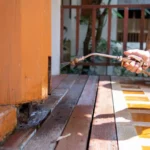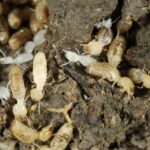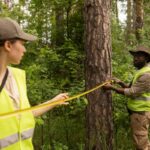What Are the Permit Requirements for Tree Removal in Epping?
Key permit requirements include:
- Formal application submission through the council’s online portal
- Assessment of tree health, size, and species
- Evaluation of environmental impact
- Compliance with local preservation orders
The City of Parramatta Council is the main authority that regulates tree removal. They review each application based on set criteria. Their role goes beyond just approving or denying requests—they also consider the needs of property owners and the goals of environmental conservation. Before cutting down any tree, residents must check with the council to confirm the permit requirements, as exemptions only apply to certain types of trees, sizes, and situations specified in their regulations.
When Can You Remove a Tree Without a Permit in Epping?
Exempt tree removal Epping applies to specific situations where no-permit tree cutting is legally allowed. Trees measuring less than 5 meters in height can be removed without council approval, making this the most common exemption for residential properties.
Mangrove vegetation growing on public land qualifies for removal without permits, though this typically requires coordination with relevant authorities. Property owners should verify the exact location and ownership status before proceeding.
Permit exemptions extend to trees forming part of heritage items or located within heritage conservation areas. Similarly, trees that are part of an Aboriginal object or situated within an Aboriginal place of heritage significance don’t require standard removal permits.
Important distinction: Trees listed on the NSW Heritage Register are protected and cannot be removed without special consent from Heritage NSW. This differs from trees merely within heritage areas, which may be removed under specific circumstances. Residents must confirm their tree’s exact classification before assuming exemption status applies.
Which Trees Are Classified as Pests and Do Not Require Permits for Removal in Epping?
Pest trees Epping residents can remove without permits include invasive species that threaten local ecosystems. The City of Parramatta Council designates certain plants as exempt pest species based on their environmental impact and aggressive growth patterns.
Common no permit needed pest trees in the Epping area include:
- Privet species (Ligustrum spp.) – spreads rapidly and displaces native vegetation
- Camphor Laurel (Cinnamomum camphora) – produces toxic compounds affecting soil chemistry
- Coral Tree (Erythrina × sykesii) – invasive hybrid with extensive root systems
- Tree of Heaven (Ailanthus altissima) – fast-growing weed tree that damages infrastructure
These species receive exemption status because they actively harm native bushland, compete with indigenous plants for resources, and reduce biodiversity. Council encourages property owners to remove pest trees promptly to protect Epping’s natural environment. The exemption applies regardless of the tree’s size, age, or condition, allowing immediate action without formal approval processes.
What Is the Tree Preservation Order (TPO) and How Does It Affect Tree Removal on Private Land in Epping?
The Tree Preservation Order Epping applies to all trees on private property within the City of Parramatta Council area. This regulation protects trees by requiring property owners to obtain council approval before removing, pruning, or damaging any tree on their land, regardless of size or species (unless specifically exempted).
TPO private land regulations mean you must:
- Submit a formal application to the City of Parramatta Council before cutting any tree
- Provide detailed reasons for the proposed removal
- Wait for council assessment and approval before proceeding with any work
- Hire qualified arborists to carry out approved tree work
Private property tree removal rules exist to preserve Epping’s urban canopy and protect significant vegetation. Non-compliance with the TPO can result in substantial penalties, including fines up to $1.1 million for individuals and $2.2 million for corporations. The council may also issue orders requiring you to plant replacement trees at your expense. Understanding Tree Removal in Epping What Permits Do You Need Before Cutting starts with recognising the TPO’s authority over your private land decisions.
Are There Specific Tree Species Exempt from Permit Requirements in Epping?
Yes, the City of Parramatta Council maintains a specific exempt species list that allows removal without council approval. These exempt tree species in Epping typically include introduced or non-native plants that lack significant ecological or heritage value.
Common no permit needed trees include:
- Green Wattle (Acacia decurrens) – A fast-growing pioneer species often considered weedy
- Golden Wreath Wattle (Acacia saligna) – An introduced species prone to spreading aggressively
- Rubber trees (Hevea brasiliensis) – Non-native species with invasive root systems
These species are exempt because they often compete with native vegetation, lack heritage significance, or pose maintenance challenges for property owners. The council recognises their removal supports biodiversity and reduces property management burdens.
However, it’s important to note that not all tree species fall under this exemption. For instance, certain protected native species require special permits for removal. Misidentifying a protected native species as an exempt one can result in serious penalties. Proper identification remains critical before cutting any tree. Consulting an arborist or the council’s specific exempt species list ensures you’re removing the correct tree legally.
Additionally, understanding the broader implications of tree removal, such as its impact on local ecosystems and compliance with environmental regulations, is crucial. For a detailed overview of such regulations and guidelines, refer to this comprehensive resource.
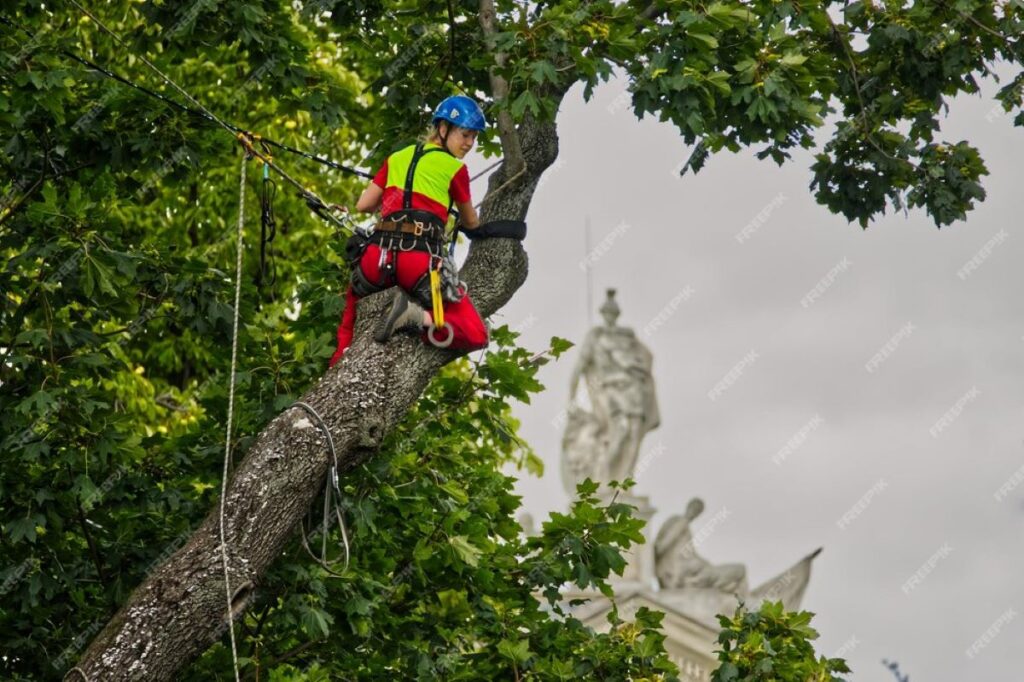
How Do You Apply for a Tree Removal Permit in Epping?
To apply for a tree removal permit in Epping, you need to submit an online application through the City of Parramatta Council’s digital portal. Here’s how you can do it:
- Visit the official website of the City of Parramatta Council.
- Look for the section on development applications and find the tree removal permit section.
What Documents Do You Need to Provide?
When submitting your application, you’ll need to include specific documents such as:
- Detailed photographs of the tree taken from different angles
- Site plans that clearly show the exact location of the tree on your property
- Arborist reports if the tree exceeds certain size thresholds
- Reasons explaining why you are requesting the removal
- Documents verifying your ownership of the property
What Information Is Required in the Application Form?
The application form will ask for details about the tree, including:
- The species of the tree
- Its height and trunk diameter
- The health condition of the tree
You will also need to provide an explanation as to why removal is necessary instead of opting for pruning or other alternatives.
How Long Does It Take to Process Your Application?
The processing time for tree removal permit applications usually takes around 4 to 6 weeks, but it may vary depending on how complex your application is. During this period, the council might reach out to you for additional information or schedule a site inspection before making a decision.
Once your application has been reviewed, you will receive an email notification informing you about the outcome—whether it has been approved, refused, or if any modifications are required.
For similar processes in other locations, such as Kenmore, Kirkland, or Pacifica, you may find useful information regarding their respective tree ordinances and permits.
See Also : Arborist Wahroonga how professional care protects heritage and native trees
What Are the Penalties for Removing Trees Without Proper Permits in Epping?
Illegal tree removal penalties Epping can be severe and costly. The City of Parramatta Council enforces strict consequences for unauthorized tree cutting, with fines reaching up to $1.1 million for individuals and $2.2 million for corporations under the Environmental Planning and Assessment Act 1979.
The council may issue restoration orders requiring property owners to replant trees of similar species and size at their own expense. These orders can cost thousands of dollars in addition to the initial fine, making compliance far more economical than risking penalties.
Local authorities conduct regular inspections and respond to community reports of suspicious tree removal activity. Council officers have the power to:
- Issue on-the-spot fines for minor breaches
- Pursue court action for serious violations
- Require detailed arborist reports at the offender’s cost
- Mandate ongoing maintenance of replacement vegetation
Tree Removal in Epping What Permits Do You Need Before Cutting becomes a critical question when considering these substantial fines for unauthorized cutting. The enforcement team works closely with NSW Environment Protection Authority to prosecute repeat offenders.
Where Can Residents Find More Information and Assistance About Tree Removal Permits in Epping?
The City of Parramatta Council resources on tree removal permits provide comprehensive guidance for Epping residents. The council’s official website hosts detailed information about permit requirements, application forms, and exempt species lists that residents can access 24/7.
Residents can contact the council directly through multiple channels:
- Phone: Council’s customer service line for immediate queries
- Email: Written enquiries for detailed responses
- In-person: Visit the council offices for face-to-face consultation
- Online portal: Submit applications and track progress digitally
The council offers pre-application consultations where residents can discuss their specific situation with qualified arborists before submitting formal paperwork. This service helps identify whether permits are necessary and ensures applications include all required documentation.
Using these official channels guarantees access to current regulations and prevents reliance on outdated or inaccurate information. The council’s staff can clarify complex situations, such as trees near property boundaries or those with potential heritage significance.
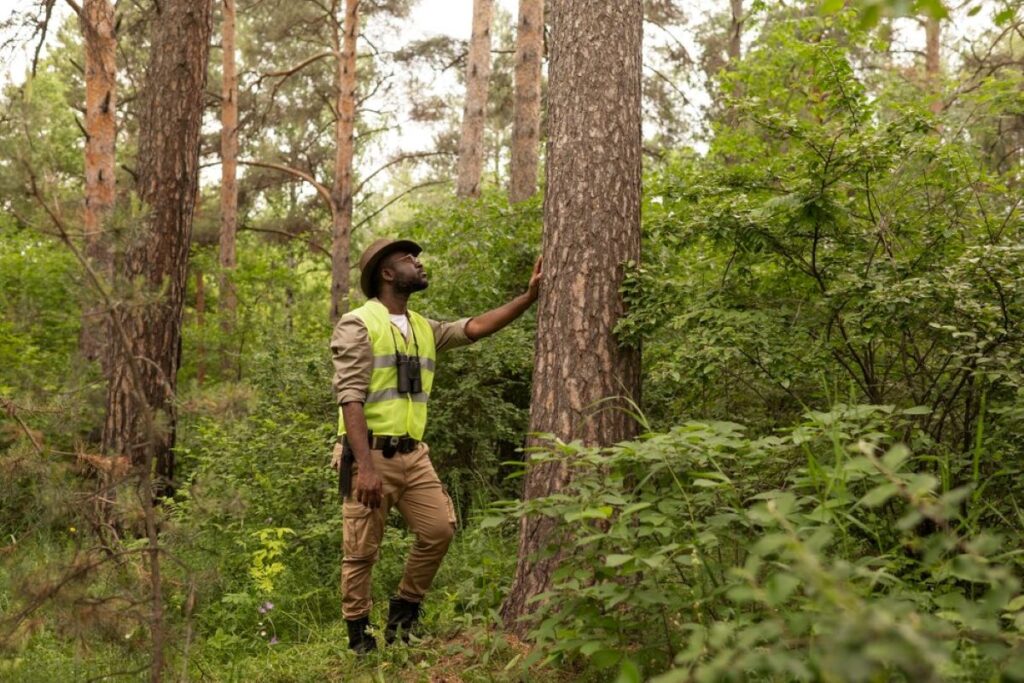
Why Should You Always Check Permit Requirements Before Removing Trees in Epping?
Checking permit requirements protects you from substantial fines and legal action whilst preserving Epping’s urban canopy. The importance of permit compliance for safe tree removal in Epping cannot be overstated, as unauthorised removal can result in penalties exceeding thousands of dollars plus mandatory restoration orders.
Key benefits of verifying requirements include:
- Protection from prosecution and financial penalties
- Preservation of significant trees that contribute to biodiversity
- Maintenance of property values through responsible landscape management
- Prevention of soil erosion and stormwater issues
- Safeguarding heritage and Aboriginal culturally significant trees
Before undertaking any tree removal in Epping what permits do you need before cutting should be your first question. Contact the City of Parramatta Council directly to verify your specific situation, as regulations can change and individual circumstances vary. Taking this proactive step ensures smooth approval processes whilst demonstrating environmental responsibility. Your diligence protects both the local ecosystem and your financial interests, making permit verification an essential first step in any tree removal project.
FAQs About Tree Removal Permits in Epping
Yes. Most tree removals in Epping require approval from the City of Parramatta Council under the Tree Preservation Order (TPO).
2. When can I remove a tree without a permit?
Trees under 5 meters, certain mangroves, and trees within specific heritage or Aboriginal areas may be removed without a permit, depending on council regulations.
3. Which trees are classified as pests and don’t need permits?
Pest trees like Privet, Camphor Laurel, Coral Tree, and Tree of Heaven can be removed without council approval.
4. What is the Tree Preservation Order (TPO)?
The TPO protects all private land trees in Epping, requiring council approval before removal, pruning, or damage, unless the tree is exempt.
5. Are there specific tree species exempt from permit requirements?
Yes. Non-native or introduced species like Green Wattle, Golden Wreath Wattle, and Rubber Trees can often be removed without a permit.
6. How do I apply for a tree removal permit in Epping?
Submit an online application through the City of Parramatta Council portal with photos, site plans, arborist reports (if needed), and reasons for removal.
7. What are the penalties for removing trees without a permit?
Fines can reach up to $1.1 million for individuals and $2.2 million for corporations, with additional restoration orders for replanting.
8. Where can I get more information about tree removal permits?
Residents can access detailed guidance via the City of Parramatta Council website, phone, email, in-person consultations, or pre-application meetings.
9. Why is it important to check permit requirements before removing a tree?
To avoid fines, preserve biodiversity, protect heritage and Aboriginal trees, and ensure safe, legal, and responsible tree removal.



